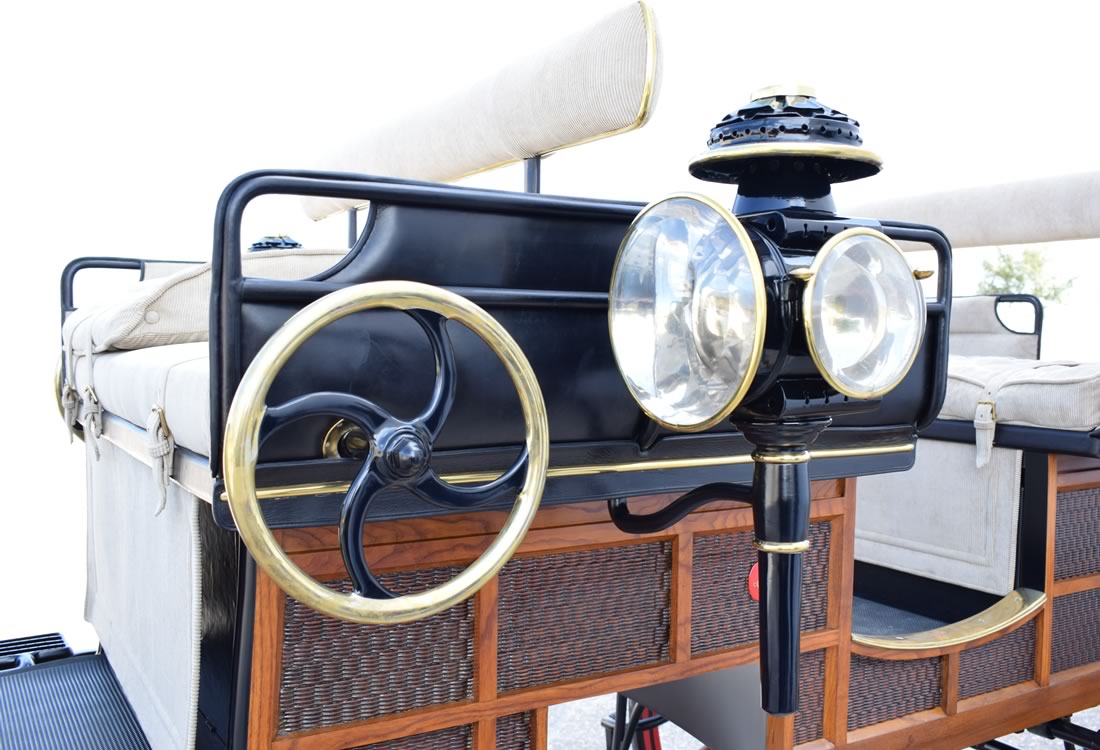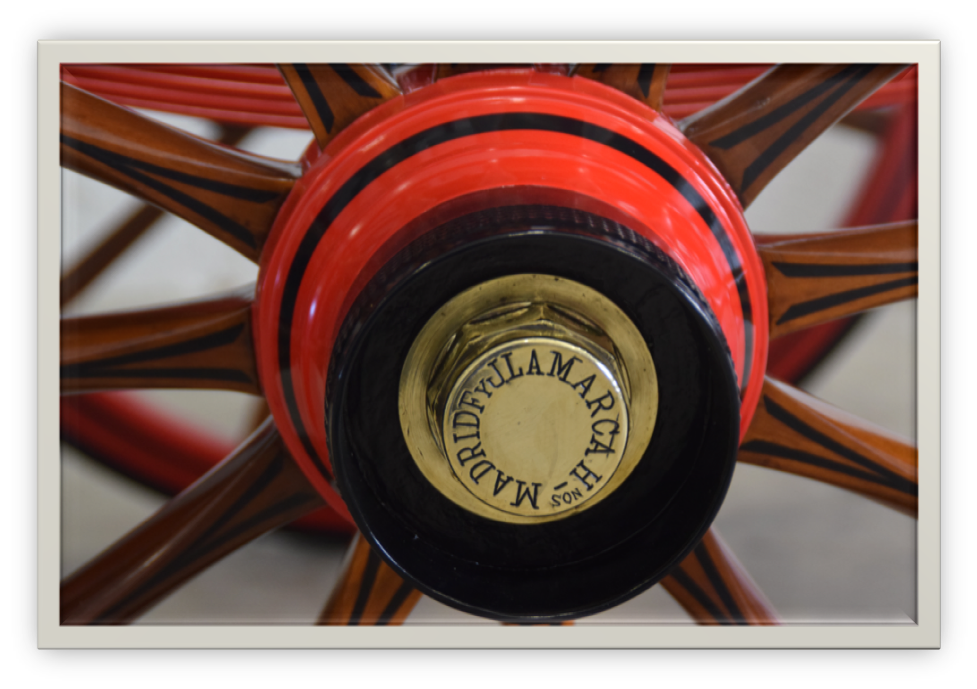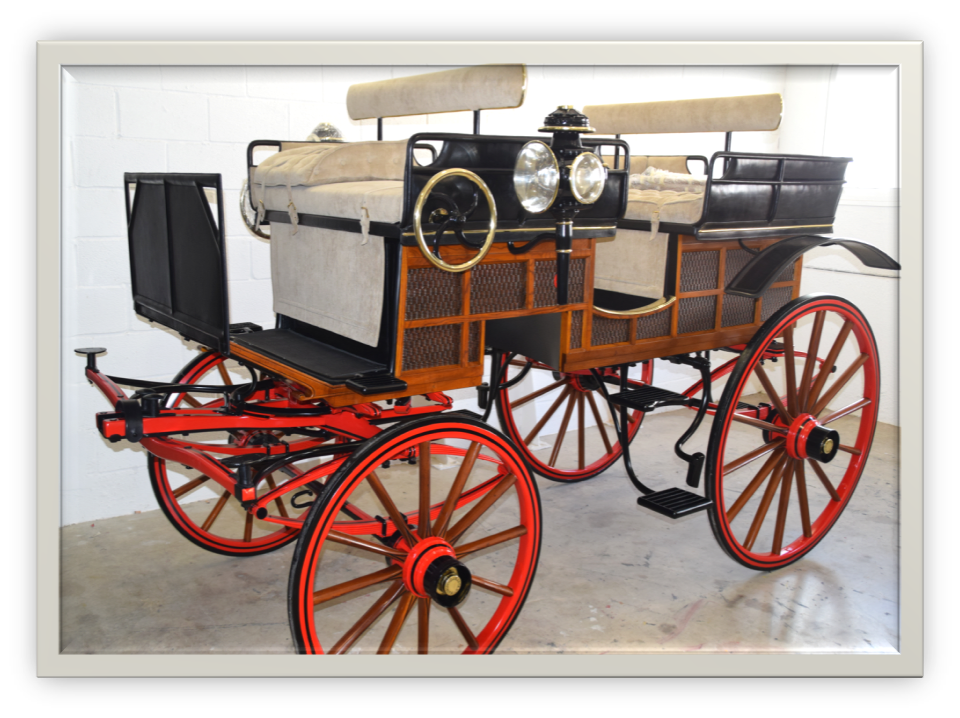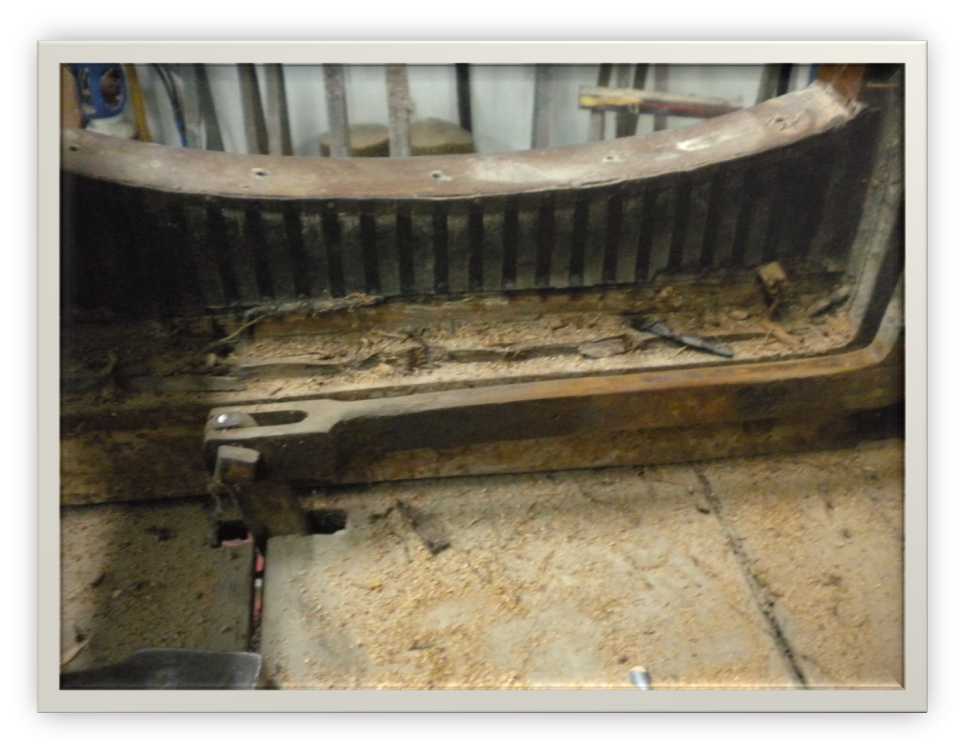Hungary Break carriage, from the 19th century manufactured by “LA MARCA”. Full historic restoration using artisan processes by Carruajes Romero in 2018.
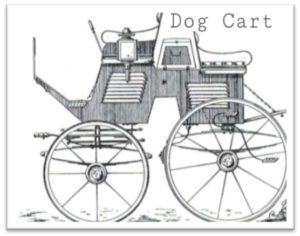
History
The name of this carriage comes from the Hungarian word Kocsi, which comes from the town of Koc in Hungary, considered the birthplace of this type of carriage.
It is a four-wheeled carriage with two seats, one behind the other, for two occupants each. This vintage carriage fits perfectly into the Phaeton family, but its peculiarities deserve a separate description.
The main difference is that the box is built with walls embedded in wooden frames imitating the cane or braided rush in the form of mats.This type carriage was very used for hunting and enjoy great walks in the countryside. Therefore, it has supports behind the first seat to transport the shotguns and after the second seat, an adjustable support to carry the prey and that can bleed without staining the interior of the carriage.
Restoration
After the usual visual examination, we found a very poor state of conservation. We observed an important attack of xylophagous insects, possibly active, appreciable through numerous orifices present in the lower box area. We also detect an important deformation of the structure in the back and sides.
Highlight the deterioration suffered by the wheels, the wooden support being very damaged and the spokes cracked.
In addition, in the upholstery there is a lack of trim and the loss of seat fill.
Once the restoration work has begun with the corresponding technical treatments, a complete disinfection and consolidation of the wood with reintegration of wood printed on the sides is carried out. At all times we keep its red highlight and the initials of the owner of the carriage.
On the wheels, once the pines were replaced in bad condition, the imperfections polished and the footlights polished, we painted the pines and clubs in red filleted in black.
Finally, during the treatment of the leathers of this car, we replaced the leathers of the railings of the seats and the fixed coverings of the backs.






